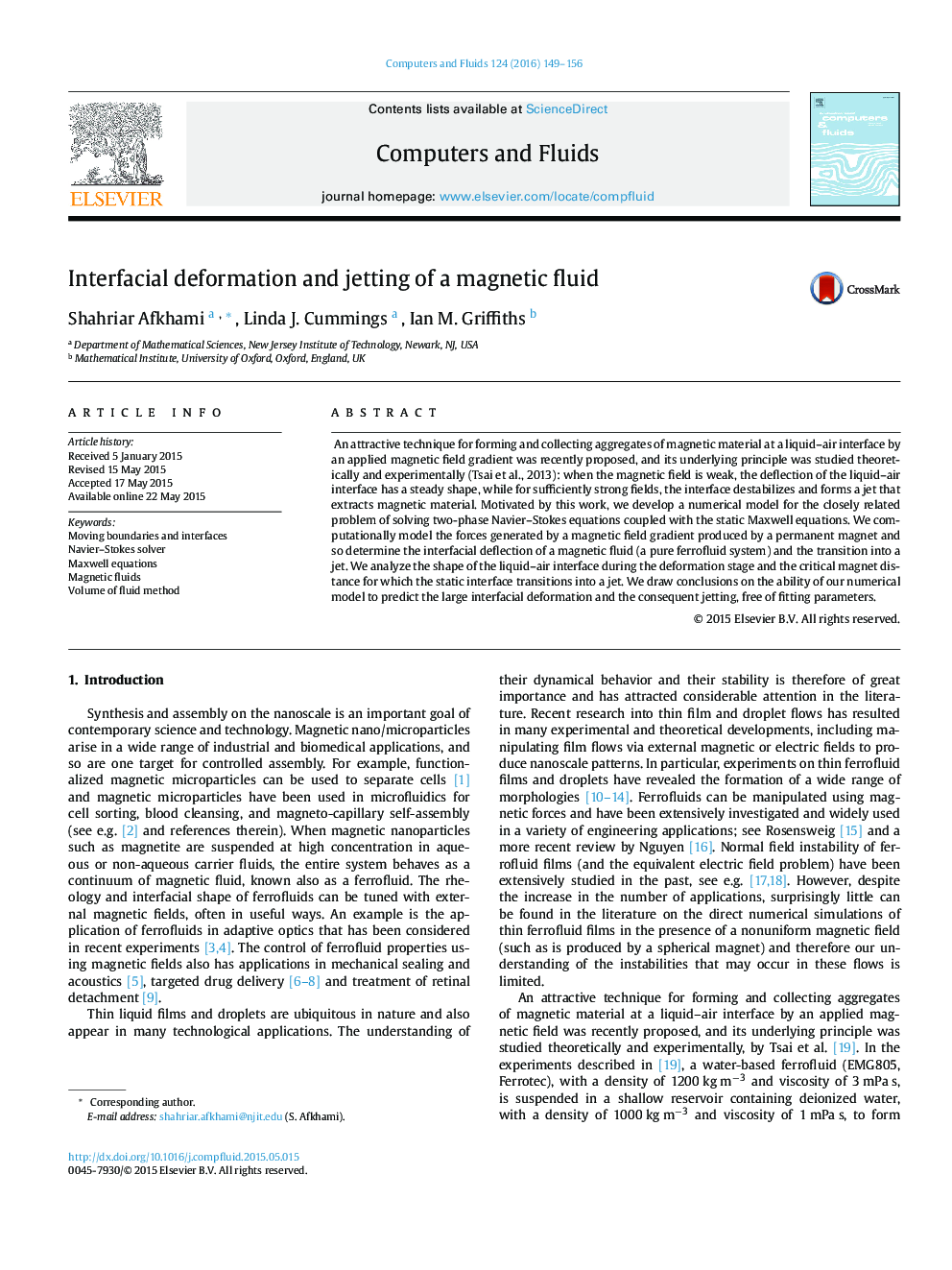| Article ID | Journal | Published Year | Pages | File Type |
|---|---|---|---|---|
| 768094 | Computers & Fluids | 2016 | 8 Pages |
•We model nonlinear evolution of ferrofluid–air interface under a magnetic field.•We determine interfacial deflection of a magnetic fluid and transition into a jet.•Numerical results provide data of maximum deflection of a ferrofluid.•A scaling law, without a free parameter, for maximum deflection is predicted.
An attractive technique for forming and collecting aggregates of magnetic material at a liquid–air interface by an applied magnetic field gradient was recently proposed, and its underlying principle was studied theoretically and experimentally (Tsai et al., 2013): when the magnetic field is weak, the deflection of the liquid–air interface has a steady shape, while for sufficiently strong fields, the interface destabilizes and forms a jet that extracts magnetic material. Motivated by this work, we develop a numerical model for the closely related problem of solving two-phase Navier–Stokes equations coupled with the static Maxwell equations. We computationally model the forces generated by a magnetic field gradient produced by a permanent magnet and so determine the interfacial deflection of a magnetic fluid (a pure ferrofluid system) and the transition into a jet. We analyze the shape of the liquid–air interface during the deformation stage and the critical magnet distance for which the static interface transitions into a jet. We draw conclusions on the ability of our numerical model to predict the large interfacial deformation and the consequent jetting, free of fitting parameters.
